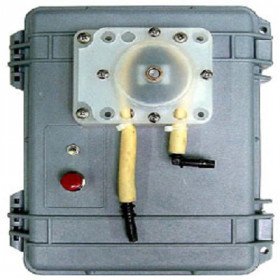What is a Water Sampler?
A CTD is frequently used in combination with a water sampler. After the package is recovered, the water sampler gathers one or more real samples of water for examination in the lab. Water samples can be used to validate the accuracy of data acquired by the instruments on the package, as well as to offer extra information that can't be measured with a field device.
What are the Uses of Water Sampler?
Ponds and Dugouts
Water samples from dugouts or ponds can be taken straight from the source or via a water body's faucet or valve. Although sampling from a faucet or valve is more convenient, it is not always preferable. Even if a faucet is accessible, it may be better to sample straight from the source depending on the purpose of the investigation.
Water samples can be taken directly from the trench or pond using the following instruments.
Taking Iron Samples
A sample iron is a device constructed of iron or steel that has been rust-proofed. A 2-L sample bottle is often used, however, smaller bottles may be utilized. A neck holder holds the sample bottles in position in the sampler. By allowing the sampler to drop to the required depth at a slow rate, a sample is captured throughout the full depth (depth-integrated sample).
In the farm store, these samplers are pretty simple to manufacture. A sampler may usually be made by welding a few pieces of steel together. Other non-leaching materials and sampler designs, in addition to those discussed below, can be successful.
When sampling from the side of a boat or off of a pier or other support structure, the sampling iron is most beneficial around the centre of the dugout or pond. When using this sampler or doing any other sort of work on or near open water, take all essential safety measures.
Tube for sampling
A sample tube is often made of potable water tubing (such as Tygon) connected to a one-way foot valve. The foot valve opens when the tube is lowered into the water, enabling water to enter the tube. The tube is gradually lowered to the appropriate depth.
Stick of Sampling
A sample stick, unlike the sampling iron and tube, maybe simply utilized from the shoreline of a dugout or pond. The greater reach provided by the length of the stick allows for obtaining a representative sample from the centre of the water body.
This sort of sampler may be purchased, but it's also simple to make with a long shaft and a sample container connected to the end. A sample volume of 1 to 2 litres should be enough for most applications, depending on the length of the shaft.
A sample container that is too big will result in a sample that is exceedingly heavy and hard to handle. The shaft can be configured to be either fixed or extensible in length. The sample container might be solid or merely connected to the sampling stick's end. To get a sample from the water, use the sampling stick.
A sample should be taken from the upper two-thirds of the trench or pond using the sampling stick. Unless a sample of surface growth is necessary, or if water is being utilized from the surface, the sample should not be obtained straight from the surface since this water will not be as representative of a sample under most situations.
Conclusion
This information should be kept in a concentrated location, such as a file folder, logbook, or binder, as well as a computer file. When you get the data back from the laboratory, you may compare the field sampling information with the water quality results.

Comments
Post a Comment